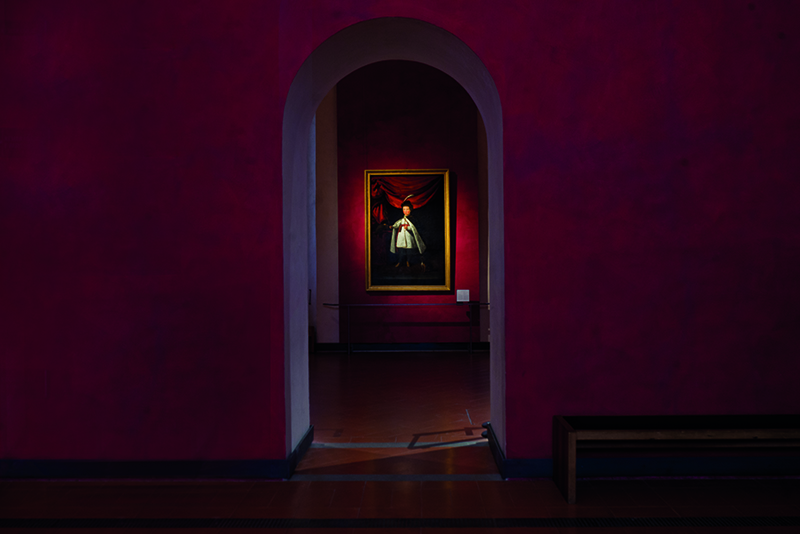Uffizi re-thinking
In costante evoluzione, un inedito tour in uno tra i musei più famosi al mondo
Only a few months after our last visit we came back to the Uffizi Gallery with our special guide: director Eike Schmidt. This place- extraordinary in itself- has undergone many changes in the past few years, but when Beauty reaches such great heights, it can be surprising even by simply changing a point of view, the surrounding space, the light. Today, however, the changes we are about to see live are more than one and the few months that went by since our last visit seem a long time now. The Uffizi Gallery once in a lifetime? Forget about it: in the digital communication era, in which news spreads faster and more widely, even the places of art have become constantly evolving wunderkammers,where changing the order of addends does change the sum. And once in a lifetime sounds like a paradox. The director guides us through the new rooms devoted to Caravaggio and seventeenth-century painting on the first floor of the Uffizi Gallery’s eastern wing. Eight rooms have been given highly evocative names: Reality and Magic, Caravaggio and Artemisia, Caravaggio: The Medusa, Caravaggio: The Bacchus, Night Light, Rembrandt and Rubens, Galileo and the Medicis, Florentine Epic . Schmidt says: “It is our intention, first of all, to provide both art experts and the public with an intellectual and emotional experience. Secondly, these rooms represent a comprehensive journey through the history of art. And, owing to the juxtaposition of Florentine and Italian painting with foreign paintings, the museum recreates the international spirit of those days, which welcomed inspirations from any country”. A fine example of this is the magnificent Armida by Cecco Bravo, recently purchased by the Gallery thanks to the financial support of the American section of the Friends of Uffizi: Armida was a Syrian woman, portrayed by a Florentine painter when the artist moved to Innsbruck, the capital of Northern European Renaissance.”
The paintings hang from crimson panels, in the rooms along the corridor ( in order not to alter the original Vasari color). The same tone for the walls of the rooms from number 96 to 99. It is the one that best represents the passionate nature of Caravaggio- the predominant color in these rooms- it is also a nuance of red which is often found in the fabrics and tapestries depicted in the paintings of those years, inspired by a textile model of the time and made with the same natural pigments used in the 1600s. An intense shade of red and yet soft on the eyes, as if the waves of time had rolled over it along with the works of art. The star of the main room is the Medusa by Caravaggio, together with the Head of Medusa by Flemish artist Marseus, Armida by Cecco Bravo, an ancient Roman statue of Athena with Gorgoneion and a Medicean shield. Displayed in another room is the Bacchus by Caravaggio, juxtaposed with several still-life paintings, including one by Velazquez. The third work by Caravaggio, The Sacrifice of Isaac, which is usually on show at the Uffizi Gallery, went out on loan for a big exhibition in Forlì and will go back to the Gallery in June. Among the other masterworks displayed in the new rooms are the Judith Slaying Holofernes by Artemisia Gentileschi, The Nativity by Gherardo delle notti, paintings by Rubens, Rembrandt and Van Dyck.
The new layout for the works by Botticelli is equally exciting: rooms 9, 10-14 and 15 have been enlarged and equipped with a new lighting system that provides natural light from above. The new layout, in addition to Botticelli’s best-known works, includes a great frescoed representation of the Annunciation by the artist, which was previously kept in the room of San Pier Scheraggio and rarely shown to the public. This almost six-meter-wide painting, created by Botticelli in 1481, is now on show in the first part of room 10-14, juxtaposed with a panel painting on the same theme executed by Botticelli for the Church of Cestello nearly ten years later. The other rooms feature paintings by Pollaiolo, Hugo van der Goes, Domenico Ghirlandaio. The two stars of the museum, The Birth of Venus and Spring, have been granted two privileges: space and time. Protected by heavy non-reflective crystal glass and placed in two separate rooms, the paintings can be enjoyed even when the rooms are considerably crowded.
Last, but only in chronological order, is the addition to the Uffizi Gallery of the Contini Bonaccossi Collection. Displayed in eight rooms (gold-ground paintings, Andrea del Castagno, Bellini, Bramantino, Furniture, Sculptures, Majolica objects, Bernini), the collection includes masterworks such as Madonna of the Snow by Sassetta, Saint Jerome by Giovanni Bellini, the altar-piece by Bramantino, the Portrait of Giuseppe da Porto with Son by Veronese and the Martyrdom of Saint Lawrence by Gianlorenzo Bernini.









